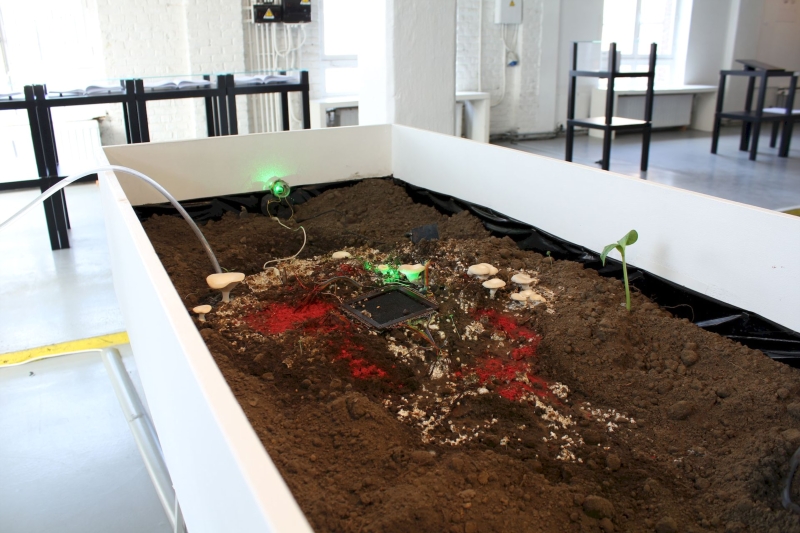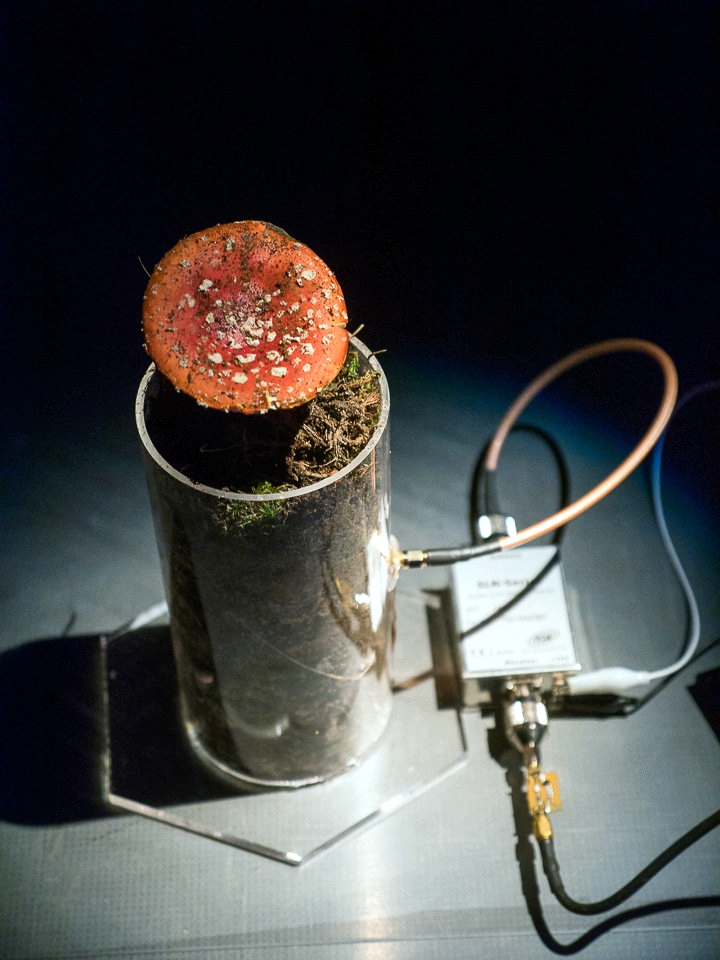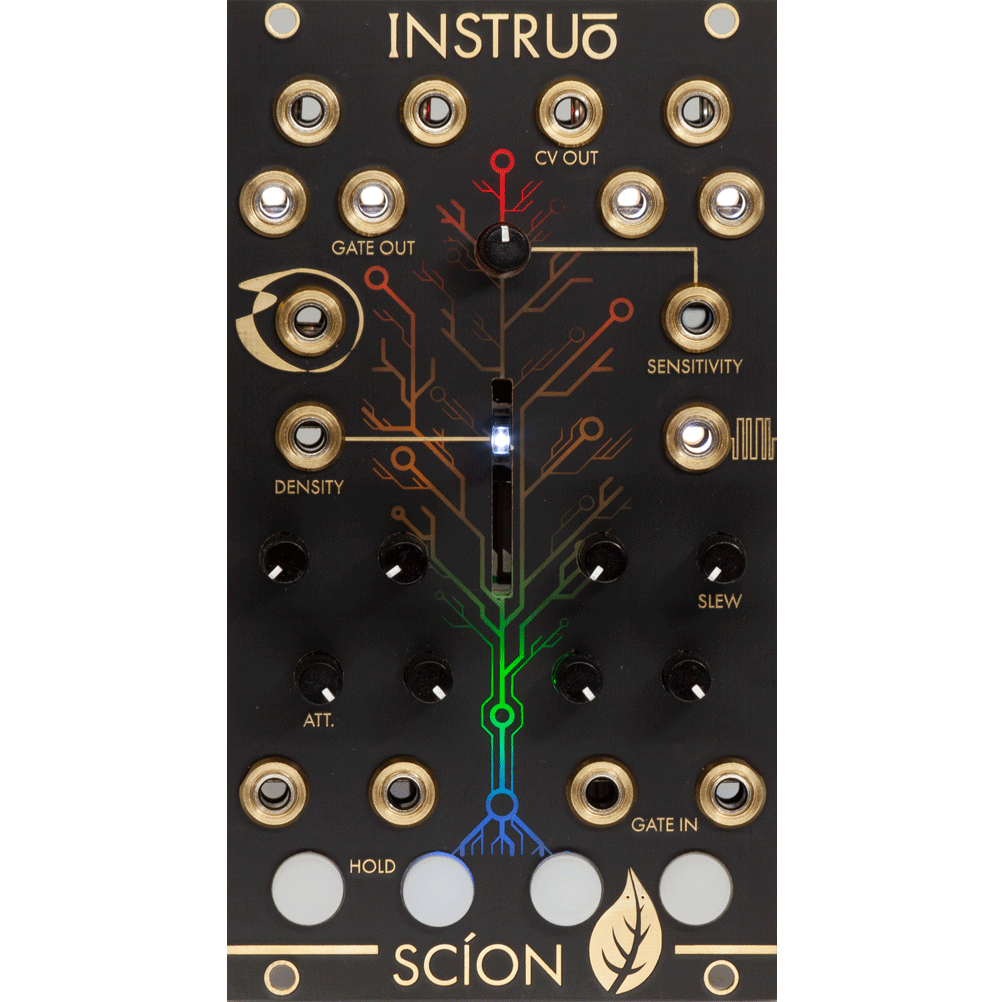Peope are finding new, organic inputs for synthesizers – the patterns of leaves, humidity and climate, and even electricity pulsing through your friendly neighborhood plants. It might be just the kind of Earth connection you need right now.
Jay Castello over at The Verge picked up the latest on this scene earlier this month – well worth a read:
Musicians are hooking up synthesizers to plants for new sonic possibilities [The Verge]
It’s great to see some friends get a shout-out, plus – bonus points to the cute animated flower banging some mushroom drums, whichever editor found that!
And check the video, which hilariously already turned into a mem – here’s Stan Smeets. Actually having heard lots of plant-based music before, I think what most excites me about this is the oozing textures made from plant leaves, powered by CDM regular TouchDesigner:
Oh, and it made the meme reddit before Stan posted it to the synthesizers sub. So that’s just how fast the Internet is, folks – you may be a meme even before you have time to share your project.
Details:
https://stansmeets.art/plant-based-instrument
Indonesian composer Fahmi Mursyid is a favorite of mine, and produced an enchanting record at the end of 2020, in collaboration with an all-ages listening arts channel in the UK called We’re All Bats. So there are real chances to translate ecological awareness and knowledge to sonic arts – not just make this into a gimmick.
Details:
Aglaonema plant play fm synth module in real time with midi biodata sonification device. By attaching the two probes to the leaves of a plant the device measures and identifies the tiny electrical current fluctuations the plant generates. These galvanic fluctuations are turned into midi notes and controls that can be read by synthesizers which allows the plant to tell about its environment and the changes that are going on around it.
Live recordings, generative, real time, and no overdub.
The folks who have made plant-to-music interfacing most accessible are Data Garden. We covered them here from their roots (erm, actually unintentional pun) as a zero-waste record label. The notion was to make biodegrading, handmade physical releases that you could plant and grow into flowers, keeping just the digital code for the music itself. They also made interactive exhibitions and outdoor festivals celebrating electronic music in gardens instead of grimy industrial spaces.
“On lead synthesizer, a philodendron…”
They’ve since made products, including the (now-discontinued) MIDI Sprout, an all plant-generated online streaming service, and now their latest tool, Plantwave.
Plantwave is the first consumer-like application of this out-there idea. You attach electrodes to leaves, and the device wirelessly connects to mobile apps to generate music. (If you want to make your own music, you can also use a minijack MIDI cable with any device you like.)
But I’d like to go back to the project that got me and a lot of other people excited by the idea, which is Leslie Garcia’s beautiful and open source project Pulsum Plantae. Leslie has built an ongoing practice that expands vision of human-music-machine relations past only the home sapiens spaiens perspective. Far from just a meme-worthy funny meme, I think it has deeply informed her work, along with collective Interspecifics, in creating new ways of collaborating and understanding technologies like machine learning.
And more than that, it’s also been a terrific teaching tool and participatory technology. When Leslie came to Berlin to co-host MusicMakers Hacklab, she engaged artist participants more than about anyone else we’ve had partly by opening up new ways of relating performance to ecology.
Here’s a presentation in Spanish from way back in 2013, worth watching even if you don’t speak the language for some fun noisy demos:
And a documentary from that moment:
You can still go check out all the open-source code and hardware – it’s still relevant today – as developed by Leslie, Paloma López, and Thiago Hersan (plus there’s a credit for the plants):
https://github.com/Lessnullvoid/Pulsum-Plantae
There are copious examples, too, for Pd, Arduino, Processing, and Fritzing. Maybe someone even wants to fork this and take it somewhere new.
It’s old work now, but I think well worth revisiting to understand Leslie’s and Interspecifics’ whole body of creation, especially as they’re popping up in new places these days.
Leslie posted recently:
Este post es para conmemorar que ya pasaron 12 años de que tuve la urgencia femenina de hacer un proyecto que retomara las investigaciones de Backster, Bose y sin saberlo ( por que no lo conocia en ese momento) de Ariel Guzik, sobre la sensibilidad de las plantas y la posibilidad de crear interfaces sonoras con ellas. Pulsum Plante fue proyecto que marco el nacimiento del colectivo Interspecifics y que me ayudo a definir mi postura como investigadora artística y de la fenomenología. Muy agradecida por haber tenido la oportunidad de explorar este proceso. Y muy impresionada de ver cómo este experimento sigue siendo un lugar común para nuevas generaciones. Recuerden amix, no deje citar a sus fuentes, les artistas que les inspiran, todes venimos de una tradición y para mantener la cultura viva es importante mantener la historia activa.
What I think is important especially is that the work by Leslie and her partners has built on this – not just as a superficial idea (hey, let’s connect wires to plants) but as a deeper investigation of the cybernetic possibilities of integrating plants and machines. Maybe that sounds lofty or even absurd, but as you see her work in unpacking machine and plant systems and networks, it has evolved into something genuinely practical.
I briefly touched on this in the Interspecifics collaboration with Leslie and Paloma López (as well as her solo work and how it has grown):
Just now seeing someone shot a video of that work:
Find more:
http://lessnullvoid.cc/content/
But what excites me is that this is more than just a surface-level or even superstitious relation to the work, but opens up new ways of thinking. Machine learning itself owes its evolution to some speculative imagination about how neurons might work – so even if the exact relationship of a machine neural network to actual neurology is largely fantasy, the speculation did yield new practice.
The work here proposes both how machines can better understand organic patterns, and how to reinvent our machine networks and architectures based on what can be learned from biological sources.
Oh, and just like Pulsum Plantae, I think biodegradable flower-growing physical releases are an early-2010s idea due for resurrection. (That is doubly true as the current war is the latest thing to threaten vinyl production.)
So go down these rabbit holes – or dig down to the plant bulbs, I suppose – know your roots, credit your sources, and go invent something new. We all stand on the shoulders of giants – or the fresh leaves of a very big tree.
More plant work
I actually hadn’t intended this as a guide to everyone doing work with plants and organic inputs – but I’m delighted folks chimed in with other examples, so let’s make a big list!
Duo Bioluminik, out on Mexico’s OTONO label, have also done a release you can plant as a seed, for instance. Luis Clériga has written that they’ve done a series of such releases.
American artist Miya Masaoka‘s whole series O Plant! focuses on plant interfaces. You get Spanish-speaking plants, climate data-processing plants, ensembles of plants, and more. (Plus, bonus – bees! Though that’s a story for another time.)

http://miyamasaoka.com/oh-plant/
Martin Howse’s work probably deserves its own story, digging into the topic of psychogeophysics and Earth – dirt to mushrooms – as integral part of musical creation. That includes even some really wild modules which you can use to … burn stuff? (Burnt offerings, really.)
Perhaps most relevant here are the earth containers, which imagine computational systems around dirt:

http://www.1010.co.uk/org/sketches.html
And there’s stuff made with mushrooms, of course – which could also be a separate story.

http://www.1010.co.uk/org/RMA.html
Let’s round out with some cosmic botanicals from none other than King Britt. He describes thusly:

This show was done completely by 2 plants in my studio using biofeedback to midi converter, the MidiSprout. Parameters were set up with a few systems to keep things in key and constantly changing. Overdubs were then done with the plants for extra sauce. No field recordings included in this episode.
Philadelphia, 2019:
King Britt Presents: Transmissions #37 : Cosmic Botanicals [NTS Radio]

MILEECE
English artist Mileece deserves her own section here, employing elaborate explorations of plant-music interfaces in SuperCollider. Here’s a round-up of resources:
MILEECE, translating plant signals into immersive soundscapes [CLOT Magazine]
Sounding Our Utopia: An Interview With Mileece [Sounding Out!]
Academic bibliography
Lastly, for anyone doing research, here is a massive link dump with some familiar names in the byline – and this covers most of the other materials I may have missed.
Can a Leaf Make Music?
Techniques and Aesthetics of Plant-Generated Control Voltage in Electronic Music
Poster presentation for the 2019 SMT National Conference in Columbus, Ohio
And many new developments!
Dr. Paul Miller (Duquesne University), Brian Riordan (University of Pittsburgh) and Christopher Cox (Duquesne University)
http://www.theoryofpaul.net/plants/
Speaking of which, I totally missed that there’s even a Eurorack version of MidiSprout, in the form of Instruo’s Scion module.

There. And that’s probably still not all of them.